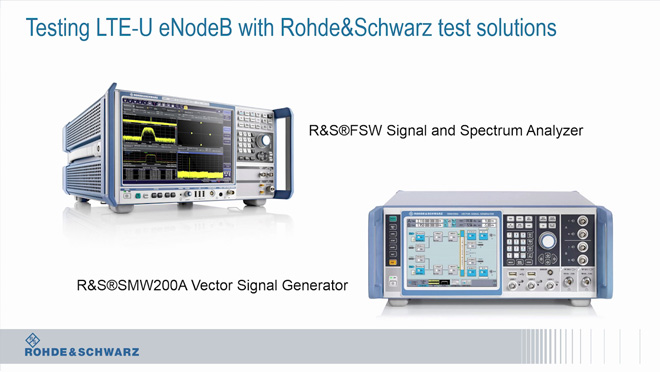Rohde & Schwarz has successfully demonstrated the generation and analysis of 5G signals based on the characteristics as specified in the Verizon open trial specifications. The R&S SMW200A vector signal generator and the R&S FSW signal and spectrum analyzer both provide outstanding test and measurement capabilities, resulting in an EVM performance of 1 % when applying these 5G signals.
In July 2016, Verizon Wireless, a tier 1 network operator in the United States, supported by leading infrastructure, chipset and terminal manufacturers, published technical specifications that describe the physical layer characteristics of a 5G signal. The specified signal is derived from LTE and adapted to be used at cm frequencies, initially 28 GHz but also 39 GHz. Those frequencies were recently allocated for 5G wireless communications by the local regulator, the Federal Communications Commission (FCC). The proprietary signal is a multicarrier OFDM signal with a subcarrier spacing of 75 kHz. It is aiming for a bandwidth of 100 MHz per component carrier. Up to eight carriers can be aggregated. The basic mode of operation is TDD.
Thanks to their built-in flexibility, the Rohde & Schwarz signal generation and analysis instruments already support the basic characteristic of the specified 5G Verizon signal. The R&S SMW200A vector signal generator equipped with the R&S SMW-K114 5G waveform candidate software option makes it easy to configure OFDM signals with the required 75 kHz subcarrier spacing and 100 MHz bandwidth. Additionally, preamble and user data settings enable creation of 5G signal with the basic characteristics as specified by the Verizon 5G technical forum. This means that reference symbols can be set, and data modulation such as QPSK, 16QAM, 64QAM and even higher-order modulation schemes such as 256QAM can be applied.
Using the R&S FS-K96 OFDM vector signal analysis software in combination with the R&S FSW signal and spectrum analyzer allows the full characterization of such a 5G signal by simply loading into the software a configuration file that reflects the parameterization of the 5G Verizon signal.
When characterizing DUTs such as newly developed power amplifiers for the cm frequency range, test instruments themselves can influence the measurement results. Rohde & Schwarz achieved outstanding performance with the R&S SMW200A and R&S FSW in the trial. When using the test instruments to measure the EVM of a 5G signal at 28 GHz, measurement results were below 1 % across a 10 dB power sweep, meaning that the test instruments did not impact the measurement.
With these testing capabilities, Rohde & Schwarz as a leading supplier of test and measurement solutions for LTE-Advanced and LTE-Advanced Pro, shows its commitment to provide continuous support of 5G test capabilities.

(Image Credit: Rohde & Schwarz)




